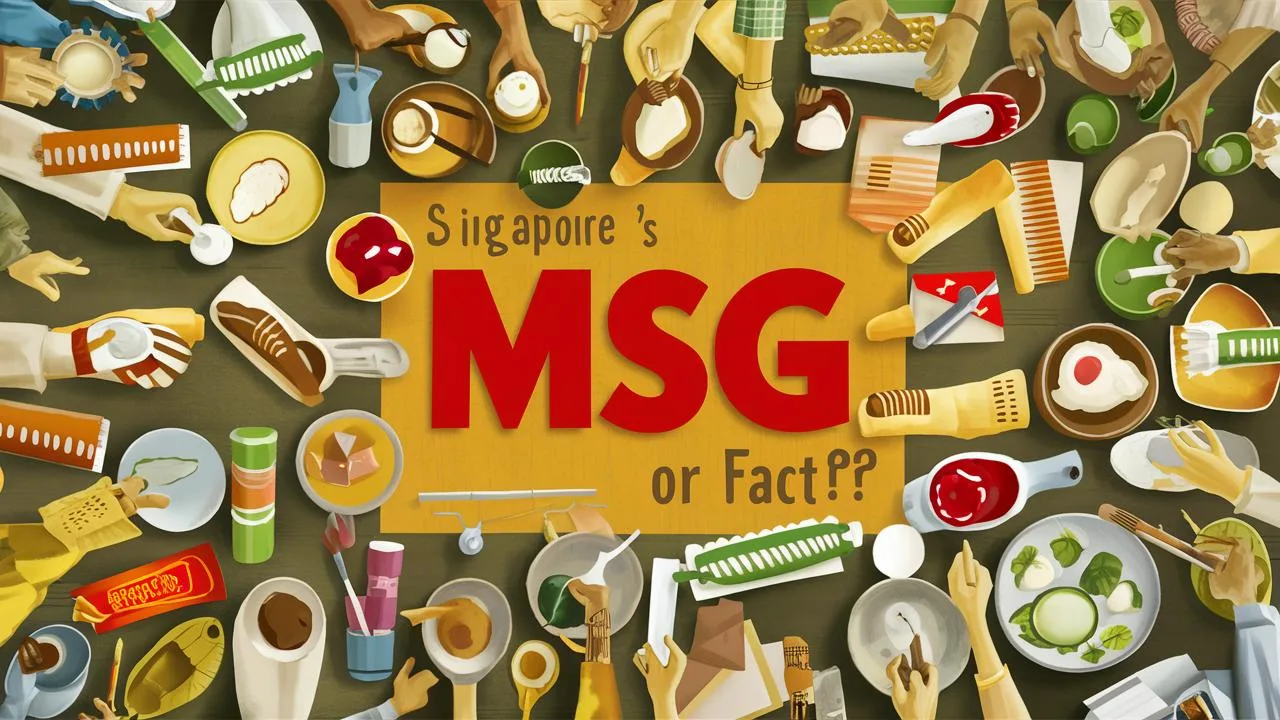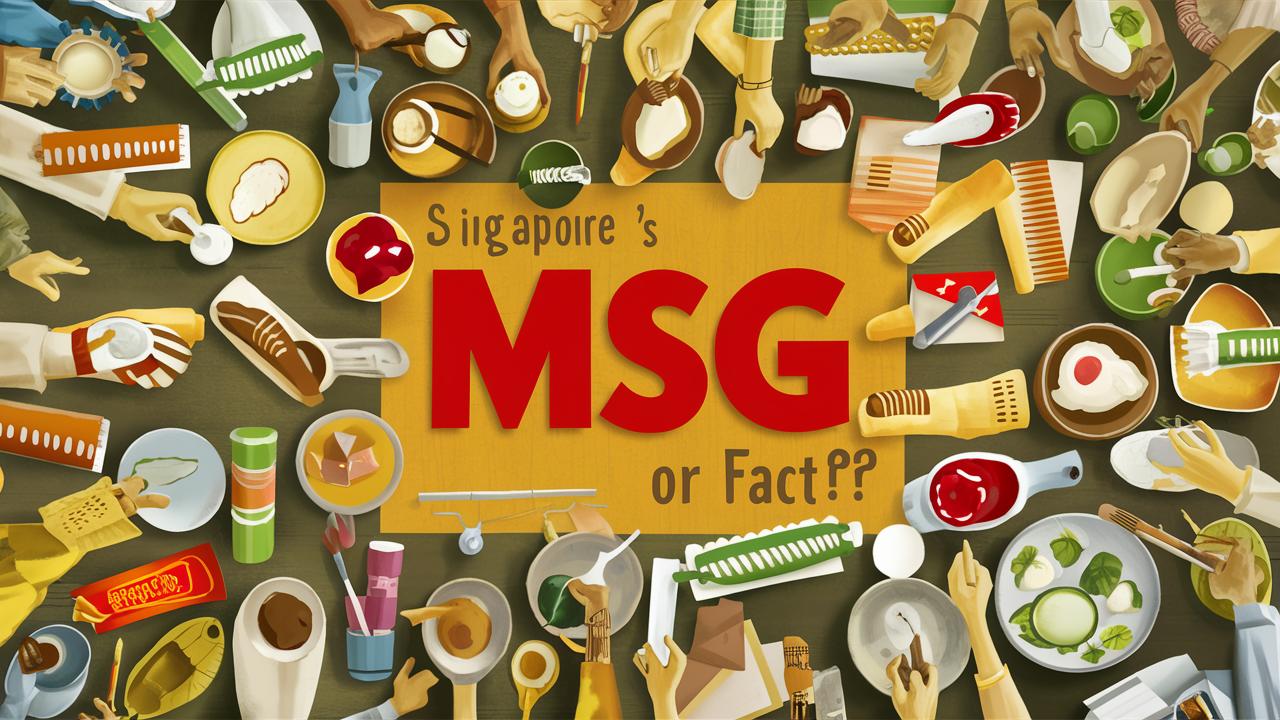Singapore’s Love for MSG: Myth or Fact?
if you’ve ever been caught in a food discussion with a Singaporean, the odds are high that monosodium glutamate (MSG) came up at least onc. And if by chance you missed this debate, were you even talking about food? The tiny city-state has earned a reputation for its culinary delights, and MSG seems to be one of its moast infamous secret ingredients. But why is Singapore head over heels for MSG, and is this love story rooted in myth or fact? Grab your favorite hawker dish and let’s dig in!
The Origin Story of MSG in Singapore
Before we can start swapping dinner party recipes, we need to venture back in time to the conception of MSG. Our story begins not in singapore, but in Japan. In 1908, a Japanese biochemist named Kikunae Ikeda identified the savory fifth taste known as umami from a type of seaweed. The rest, as they say, is culinary history. Thus, monosodium glutamate was born, and it was not long before it traveled over 3,000 miles to capture the heart of Singapore.
Fast Forward to Singaporean Shores
MSG made its entrance in Singapore as a flavor-enhancing maestro amidst the rich melange of Malay, Chinese, Indian, and Peranakan cuisines.many Singaporeans affectionately refer to it as ajinomoto, a nod to the popular brand that brought MSG to dinner tables everywhere. Ah,MSG – the sprinkles on the cupcake of savory! But is Singapore’s affinity for it a tale of genuine love,or just cleverly marketed culinary convenience?
The Cultural Conundrum: MSG in Singaporean Cuisine
The penetration of MSG in Singaporean cuisine isn’t just about its ability to enhance flavors. In Singapore, food isn’t food until it sends your taste buds cha-cha’ing with excitement.MSG has the magic touch to make that happen. While some see it as a miracle of modern science, others raise their spatulas in championing all-natural flavors. The controversy surrounding MSG often divides kitchen counters.
A Deeper Dive into Hawker Culture
For those unacquainted with Singapore’s hawker culture, the hawker centre is the ultimate dining paradise, featuring various stalls serving diverse cuisines at wallet-friendly prices. Here, MSG reigns supreme. Many hawker stall owners consider MSG an essential tool to efficiently enhance the umami quotient in their dishes without spending on copious amounts of natural ingredients.
- Helps balance pale ingredients and cooked flavors.
- Makes dishes more savory with reduced cooking time.
- Allows for competitive pricing by minimizing ingredient costs.
Debunking the MSG Mythos: Health Impacts and Science
MSG has gotten a bad rap over the years, but is there any substance to these claims? often characterized by phrases like “Chinese Restaurant Syndrome”, MSG has been accused of causing various symptoms. But is it true?
Science Weighs In
The majority of scientific evidence indicates that MSG is safe when consumed in typical amounts. In fact, the U.S. Food and Drug Administration (FDA) has classified MSG as “generally recognized as safe” (GRAS),and similar pronouncements have been made by health organizations worldwide,including the World Health Organization (WHO).
let’s clear the table of myths:
- headaches and nausea? Studies show inconsistent results regarding these symptoms being directly connected to MSG, and it truly seems to affect only a minority sensitive to large doses.
- Alleged Allergies? Real allergic reactions are quite rare, even though some individuals may experience mild symptoms.
- Weight Gain? MSG adds minimal calories to a dish, making it an unlikely culprit in weight gain assertions.
MSG and the Global Stage: International Perspectives
Singapore isn’t alone in this flavorful affair with MSG. Across the globe, countries have approached this taste enhancer with varying degrees of acceptance.
East Loves West!
While many Western countries have tread cautiously around MSG, labeling rules and cautious communications abound, Asian countries happily incorporate it into everyday cuisines. This is partly due to a rich culinary tradition that values depth and flavor saturation, easily achieved with a hint of MSG magic.
MSG Alternatives: For the Natural Foodie
For those who prefer to dodge the MSG bullet or explore choice paths to umami paradise, fear not; flavor doesn’t have to compromise.
Natural umami Boosters:
- Seaweed: not only rich in umami but also perfect for a variety of dishes from broths to dressings.
- Mushrooms: Shiitakes are especially good at providing that umami punch.
- Fermented Soy Products: Such as miso and soy sauce,ages well and enriches flavors.
- Tomatoes: especially sun-dried ones, for a truly rounded umami profile.
Conclusion: Dialogues of Taste and Future Perspectives
So, is Singapore’s affair with MSG a mythic romance or an undying fact? Well, a bit of both, perhaps. It’s indeed a longstanding tradition within the contry’s culinary scene,capturing the hearts and palates of many with its potent kick of flavor. Yet, the health myths surrounding it remain as prolific as ever. In modern-day Singapore, whether to shake or not to shake the MSG bottle boils down to personal preference and informed choice.
As our knowledge deepens and the culinary world tilts increasingly toward transparency and health-conscious choices, the MSG debate might gradually shift from its current scrutiny-heavy status to a more accepted part of gastronomic diversity. Until then, whether you’re dining al fresco amidst the bustling hawker centers or experimenting in your kitchen, let your taste buds be the judge!


